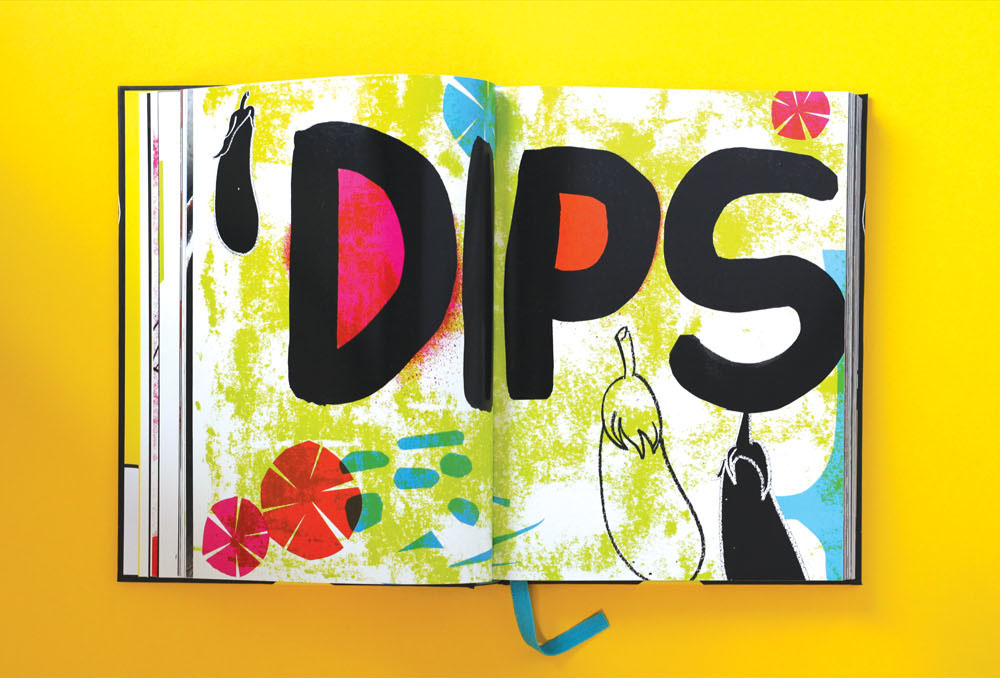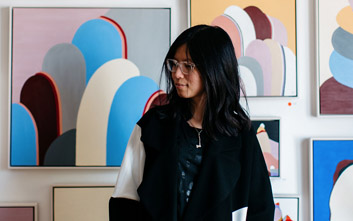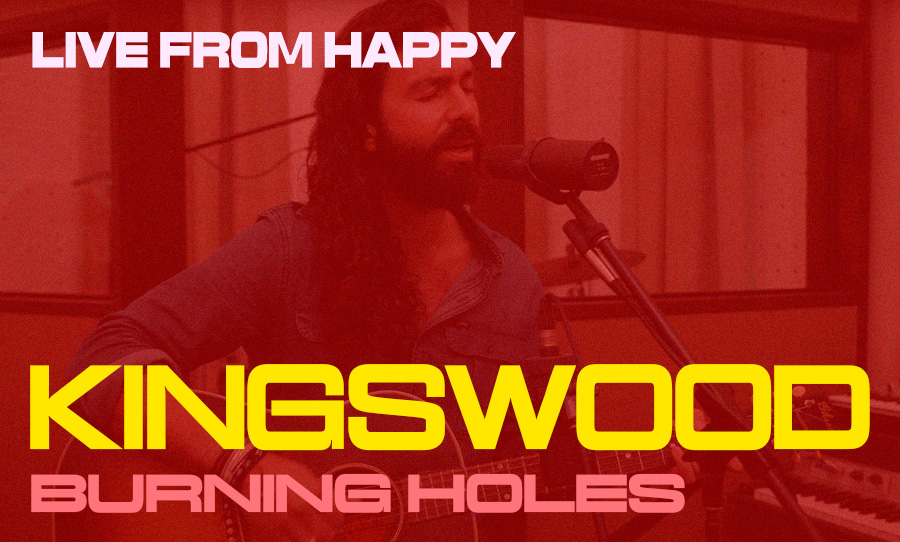From aspiring artist to book designer, homewares designer and art director, 31-year-old Evi Oetomo is recognised for her unique array of abstract works which can be found in books and galleries around Australia.
Moving from Indonesia to Sydney at the age of 17, Evi pursued her studies in graphic design, allowing her portfolio to flourish. Harbouring a love of books from a young age and a natural creative flair, it was no surprise the evening bedtime stories would someday be held accountable for what is now a successful career in bright, beautiful, aesthetically pleasing works of art.
Evi’s publishing work began at Penguin Books and soon expanded to its imprint Lantern, with multiple magazine, online and homeware collaborations since. Now running her own design studio, we chatted to Evi to get a little more of an insight into how she combines making a creative living with a continuously diverse range of side projects.

Graphic design, publishing, homewares, art and more: we chat to Evi O about her multi-faceted creative career to date .
HAPPY: Tell us a bit about your style, is there a concept or theme behind your artwork?
EVI: Style-wise, my work is abstract combined with study in colours. I usually only paint in collection and do individual pieces very rarely, so there is always a theme and concept behind each body of work. I tend to explore the ideas of space, location and people. Colours are great to evoke emotions and I usually change my palette for each body of work.

HAPPY: How did you initially get your artwork noticed and what does Indonesia have to offer in terms of becoming successful, in comparison to Sydney?
EVI: I think I got lucky, really. I had been painting just for myself when I had spare time for three to four years, not showing anyone. A curator friend, Amber Creswell Bell, noticed my work one day and invited me to a group show, then one thing led to another and the rest is history.
Indonesia is unique and a good place to start if you want to break through the Asia market. Jakarta and Yogyakarta have great art scenes although I haven’t had much Indonesian experience, to be honest. I feel in Sydney, art is more rooted in the culture so it should be easier to make an art career. But I think to be successful in art, anywhere, you have to have people supporting and believing in you. What is successful when it comes to art can be interpreted in so many different ways; art can make you famous, or rich, or put a spotlight on a subject. But I think art is all about evoking emotions.

HAPPY: How did you fall into working for book illustrations? Was this always something you hoped to achieve?
EVI: The books actually happened first, way before the art. I always loved illustrating and books but was never confident of my illustration and art skills, so I went to design school rather than art school. There’s also a side story with that – coming from an Asian family in Indonesia, the idea of art school was unheard of. I had to make a pact with my mum to marry a rich husband if I couldn’t find a job being a designer. In the end I ended up finding a job and not a rich husband. It was my first and only real job and it was with Penguin Books, six months after uni and various internships.
I spent almost a decade (pretty much my 20’s) honing my book design expertise with the company. Book publishing is not a glamorous industry and we did not always have enough budget to commission illustrators, which pushed us designers to illustrate on our own. I embraced that challenge and treated it as another creative outlet at work. That’s how I managed to put my illustrations skill to work.

HAPPY: Tell us a bit about your homewares label Anekka.
EVI: A group of like-minded friends wanted to have a go at playing homewares label and production. We all had different backgrounds, one in production and another in industrial design and marketing and then there was me. To me, the process was very interesting and exciting as I was constantly learning new things. Starting up Anekka felt like another form of education, both from creative and entrepreneurial perspectives.

HAPPY: Can you offer any advice for budding artists hoping to turn their love for art into a full-time career?
EVI: It’s important to be honest to your story and genuine to your style. I think if you want to turn it into a full-time career then you have to treat it like a job, constantly produce and evolve your work, perhaps work with a gallery who is suited to your work, get yourself out there and so on. It’s not easy, but it is possible. And just like any other career, patience and determination is key.

HAPPY: Do you have any upcoming projects or exhibitions for 2017?
EVI: There will be a few things on the horizon for 2017 including an individual show and some group shows at St Cloche gallery, Paddington. I’ve also been tinkering on a few art publishing projects in addition to the never ending design projects and collaborations that lately have pushed me to explore new mediums, like animation! All fun stuff.
Keep up to date with Evi O’s work on her website.



